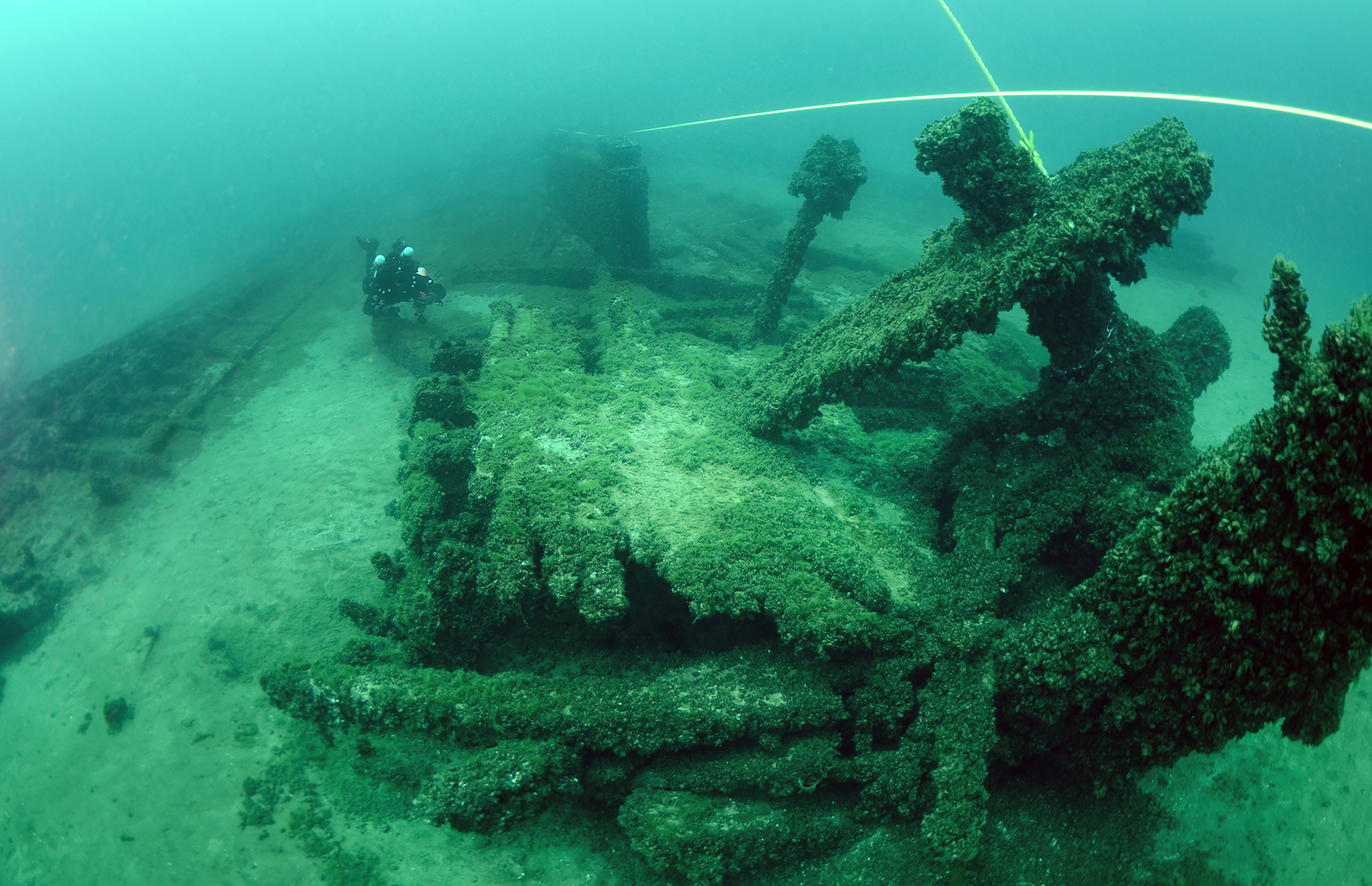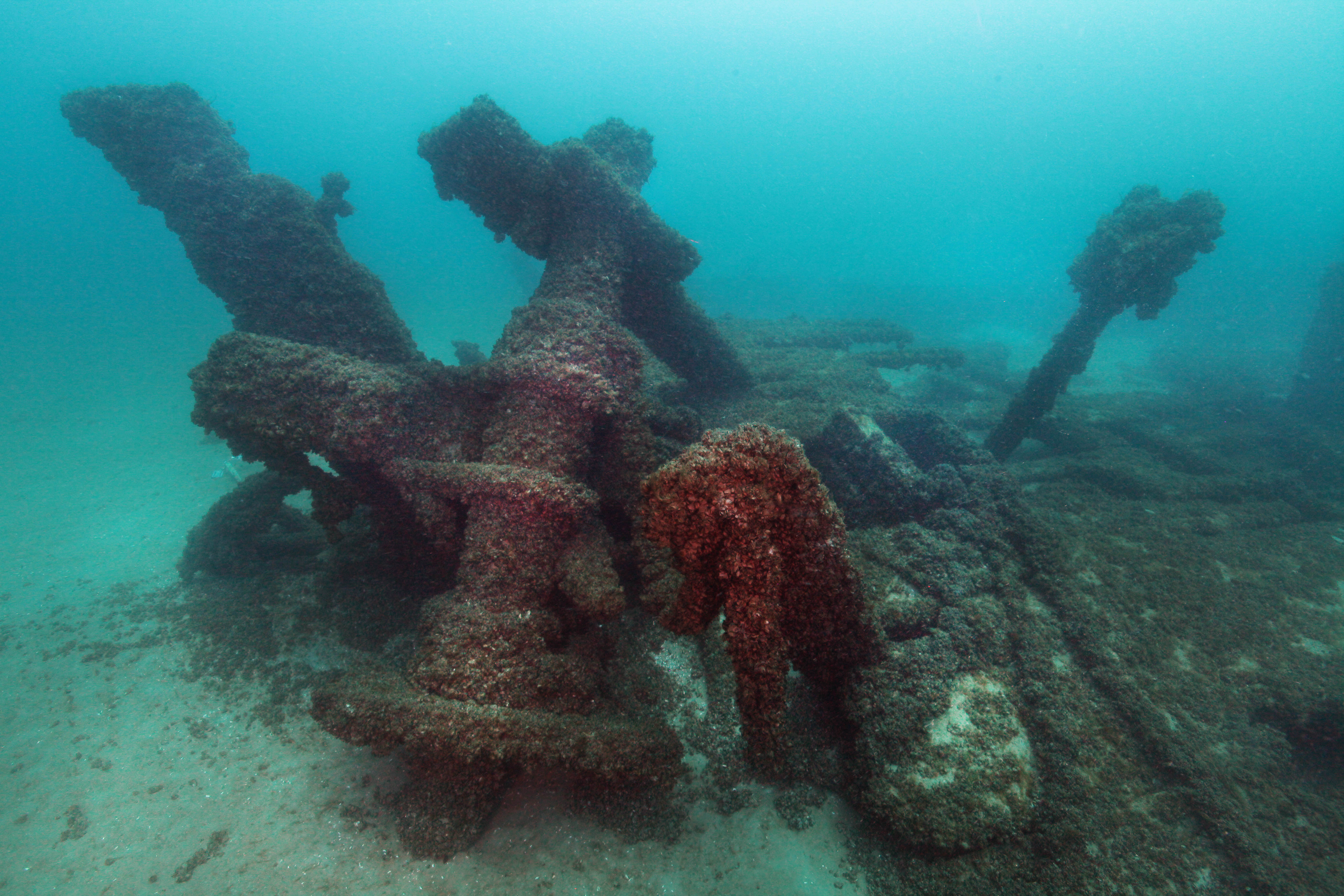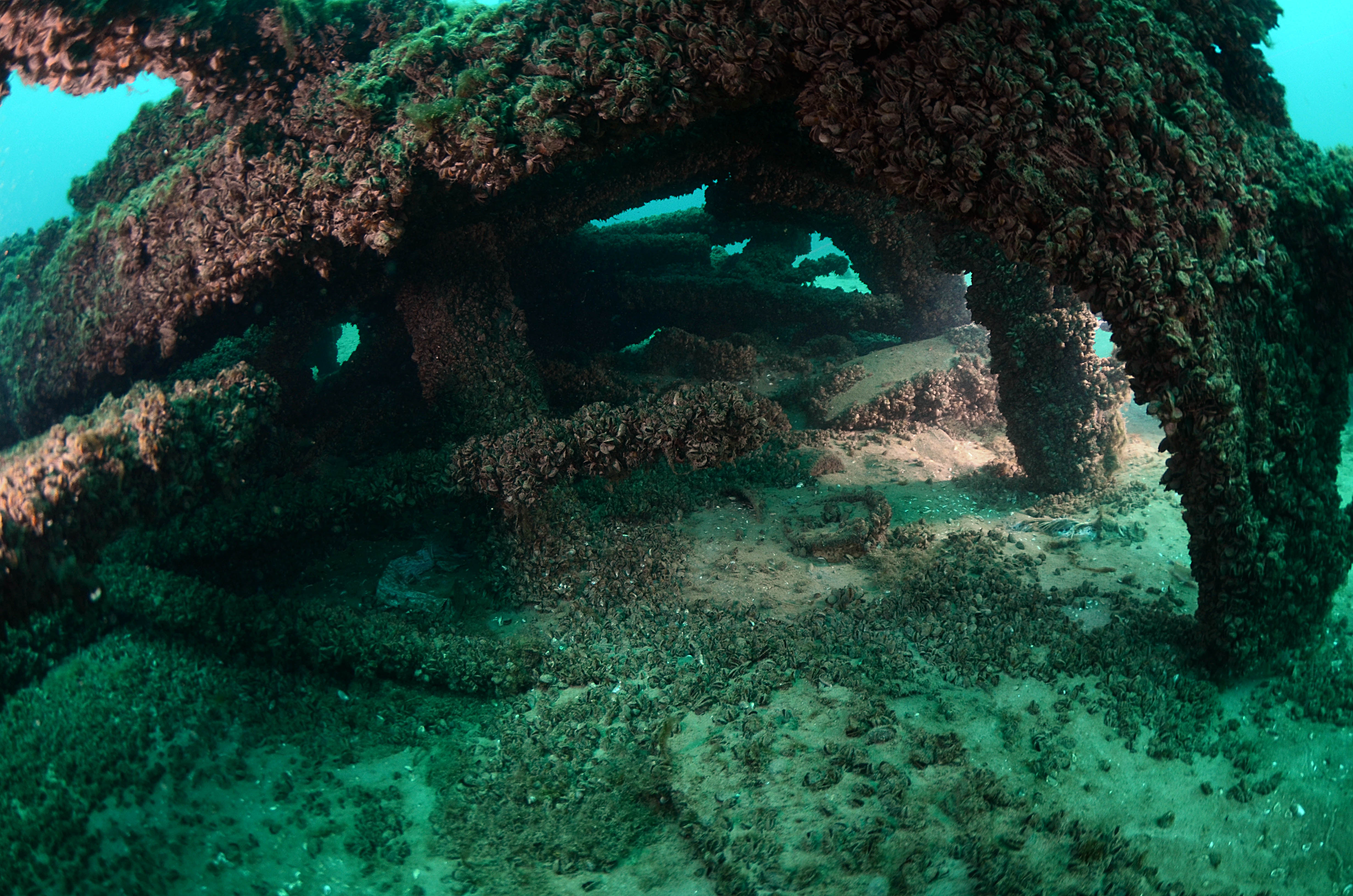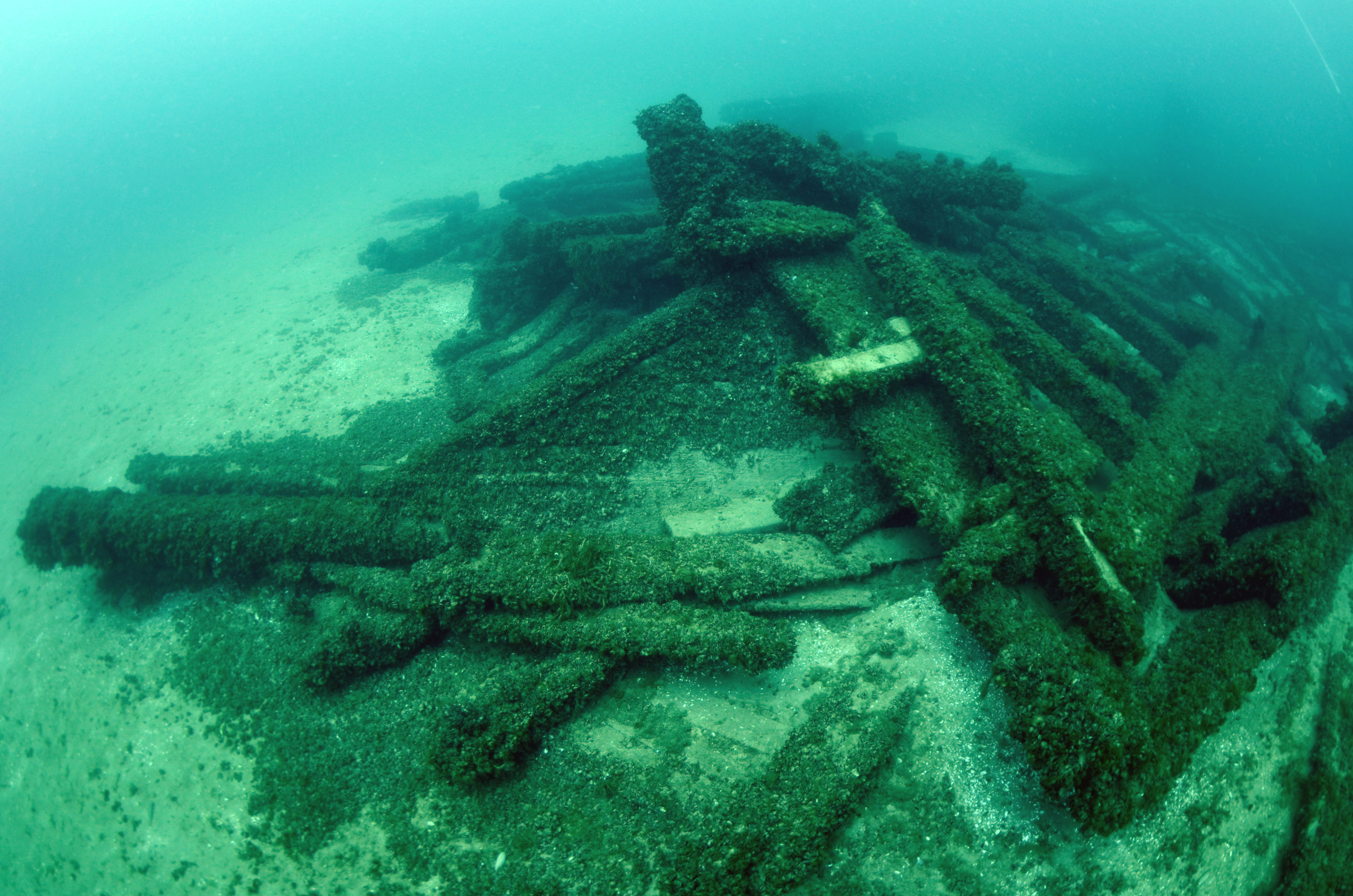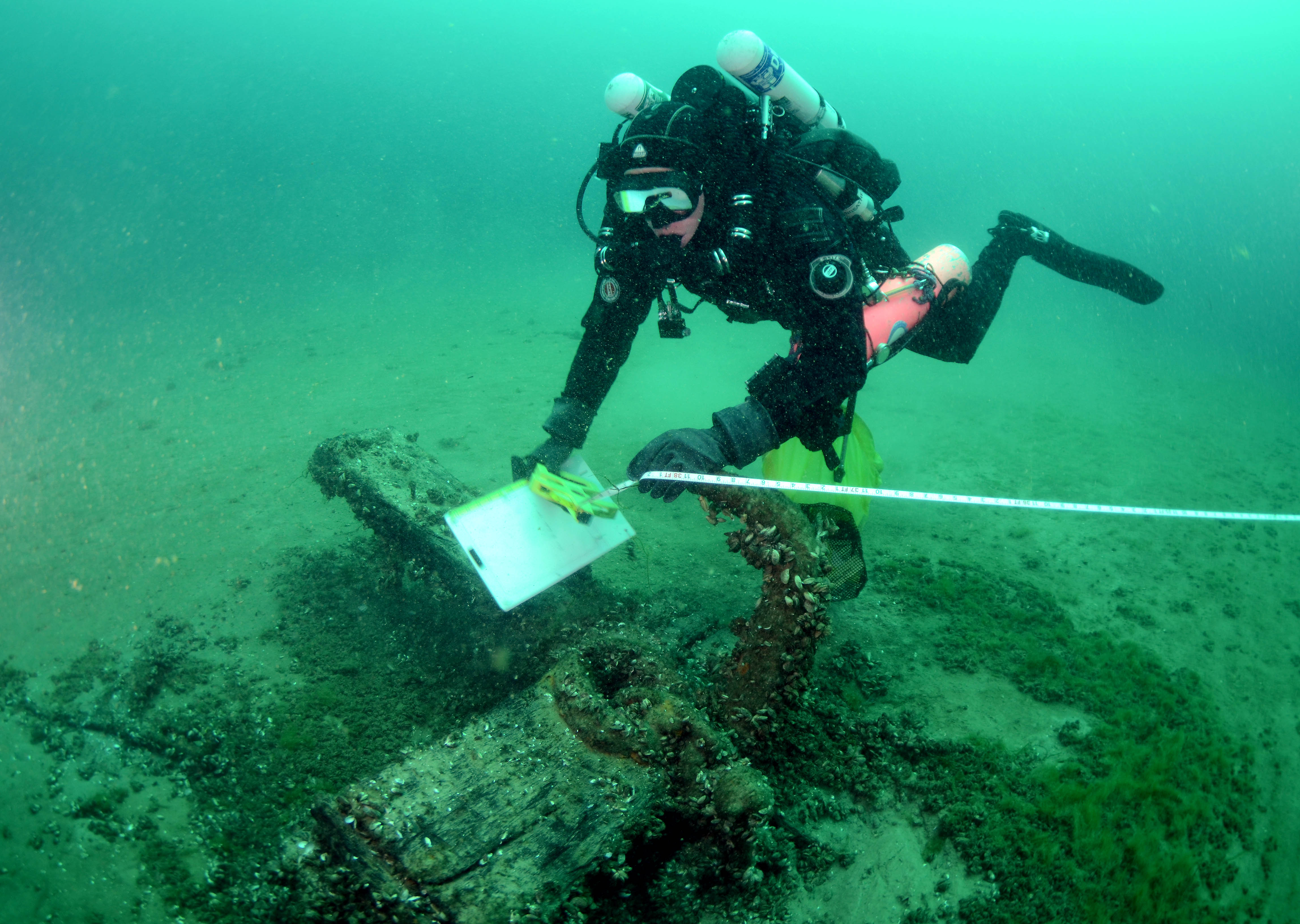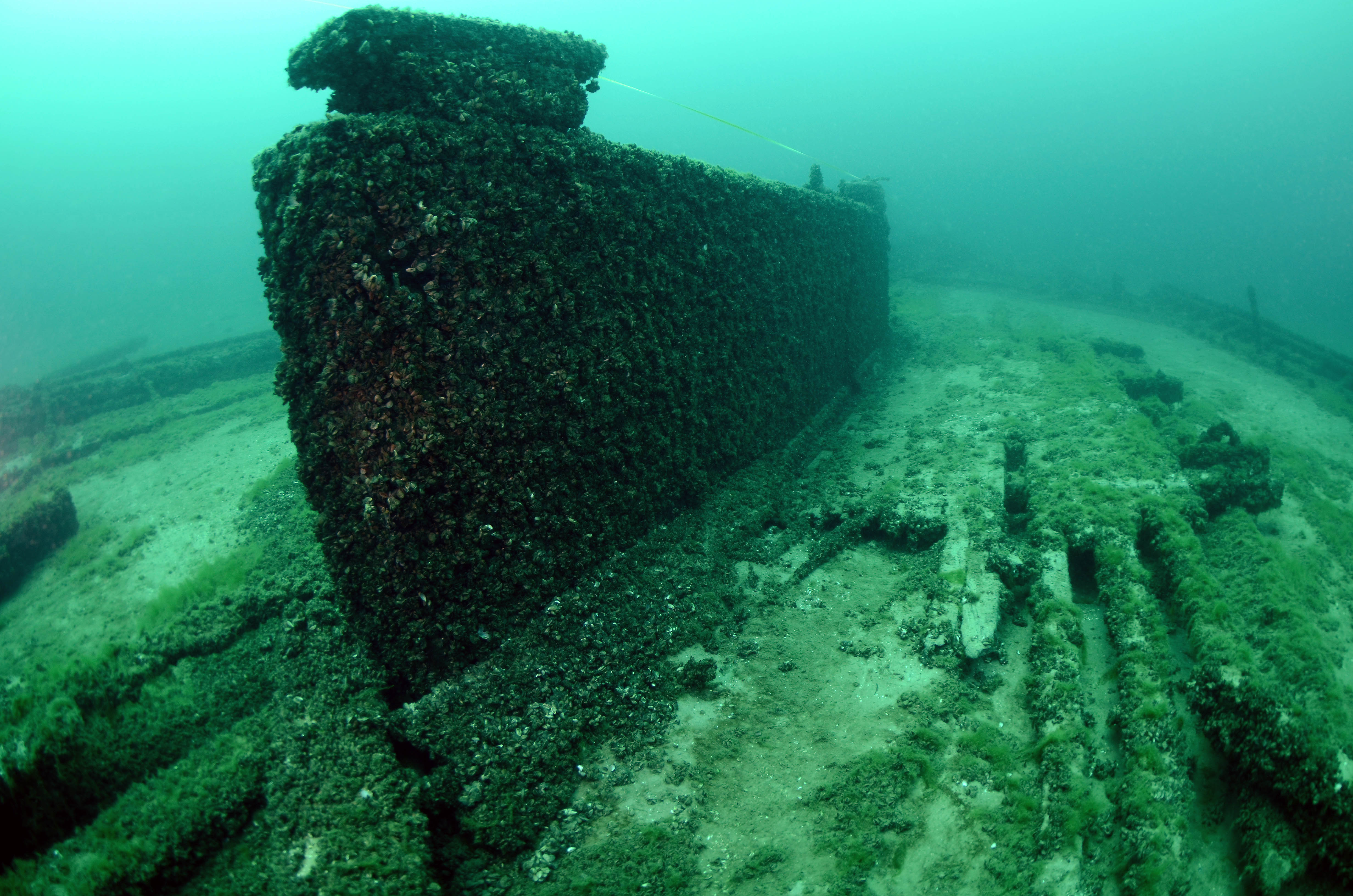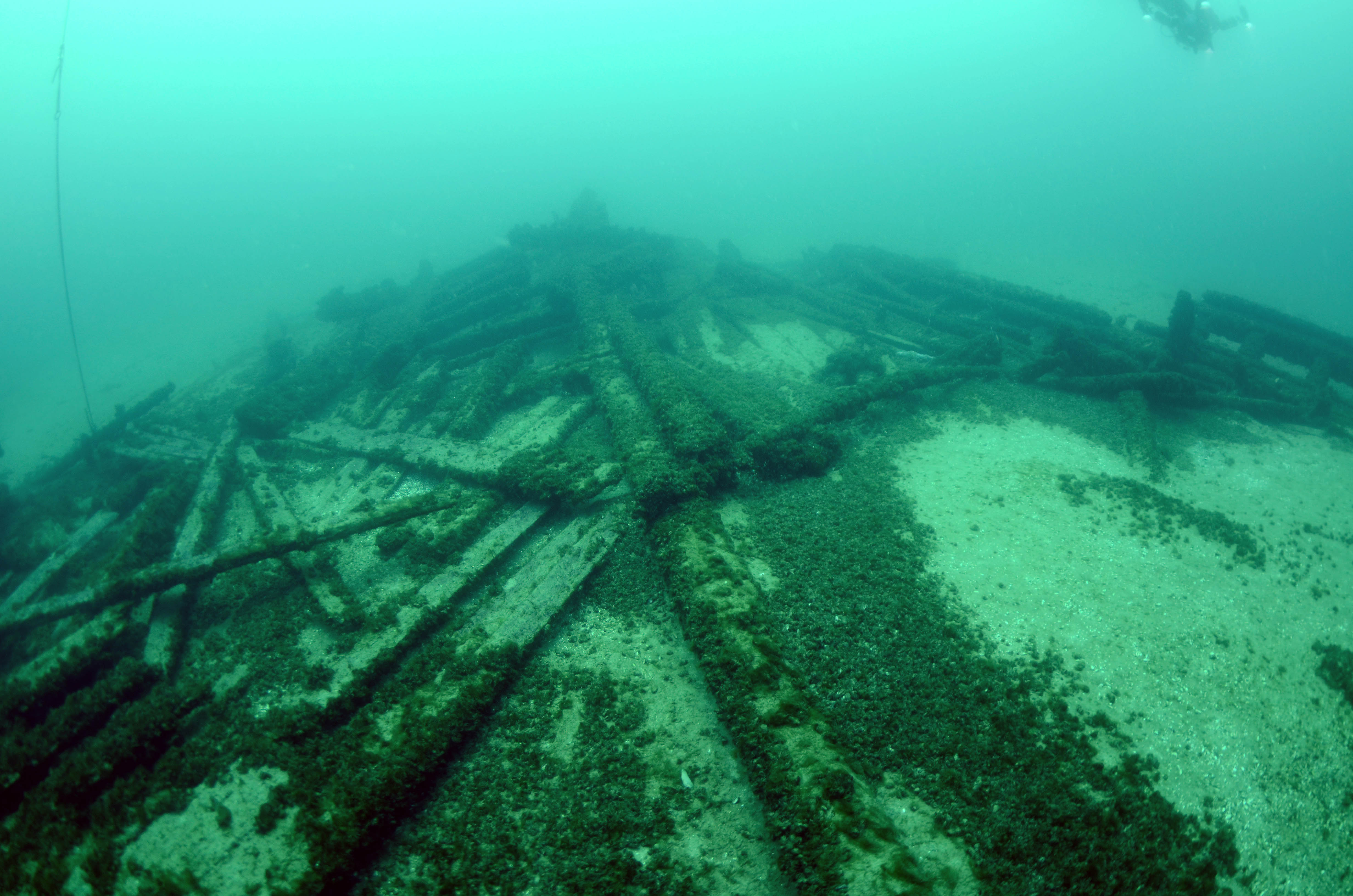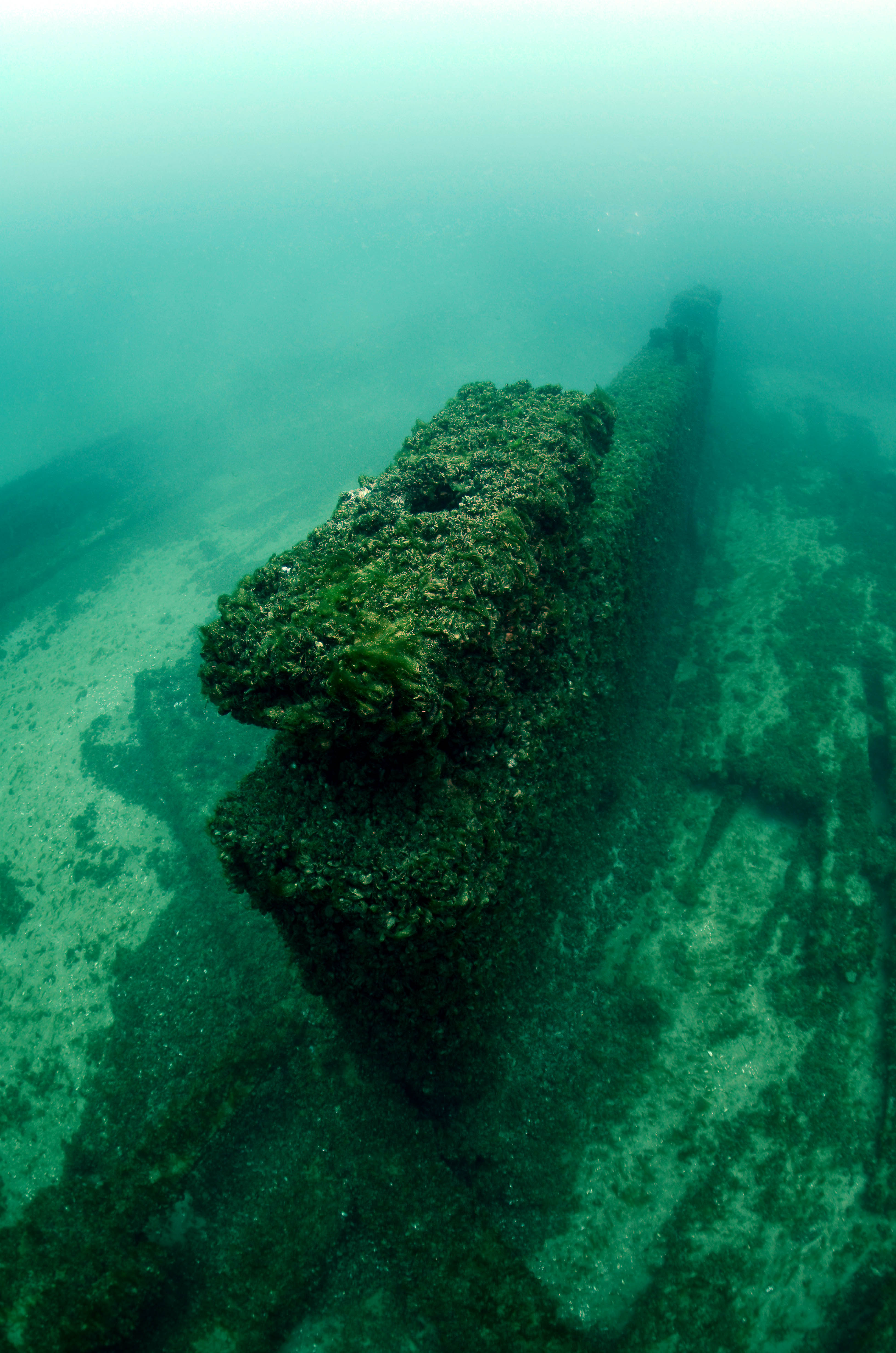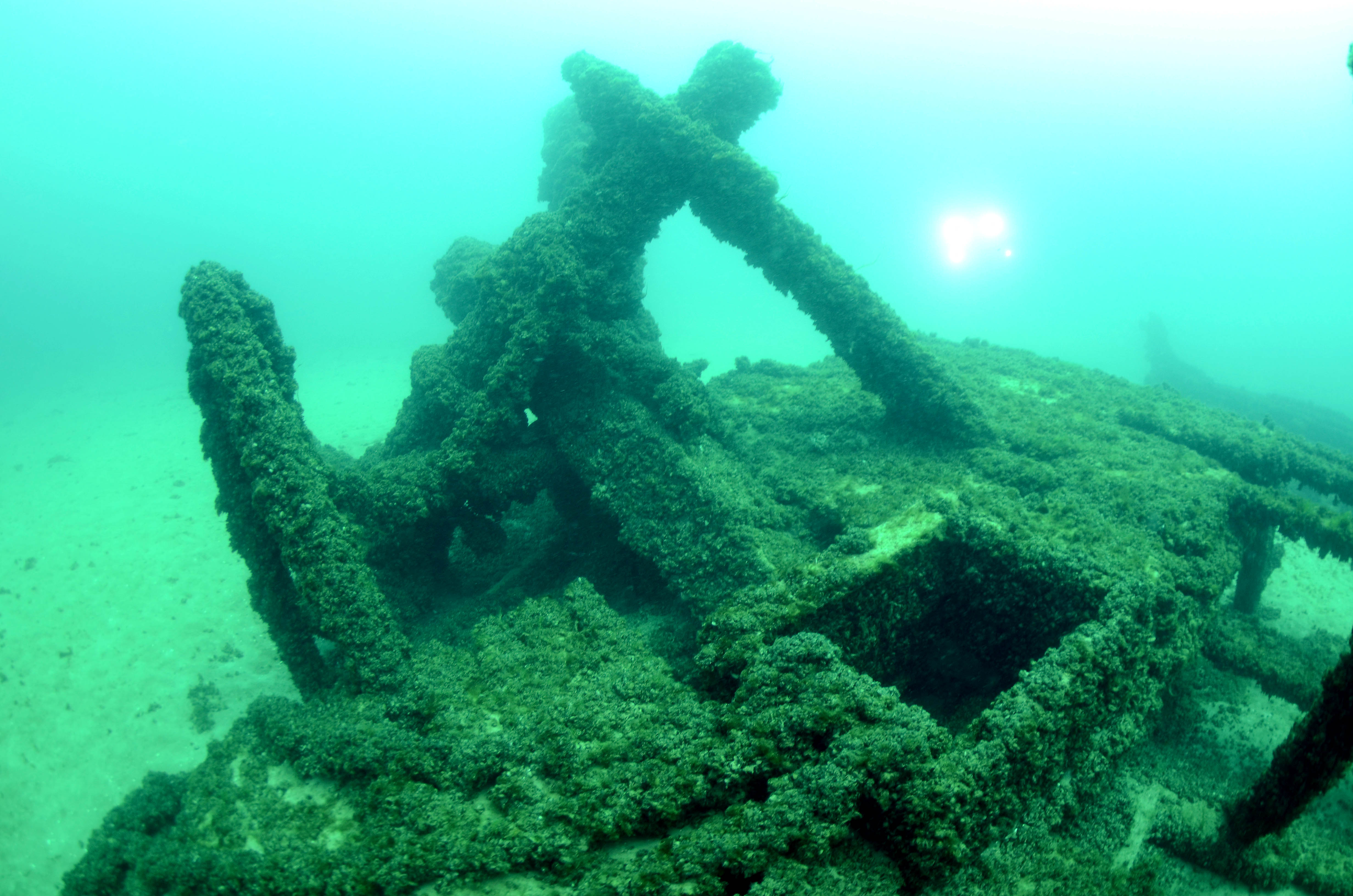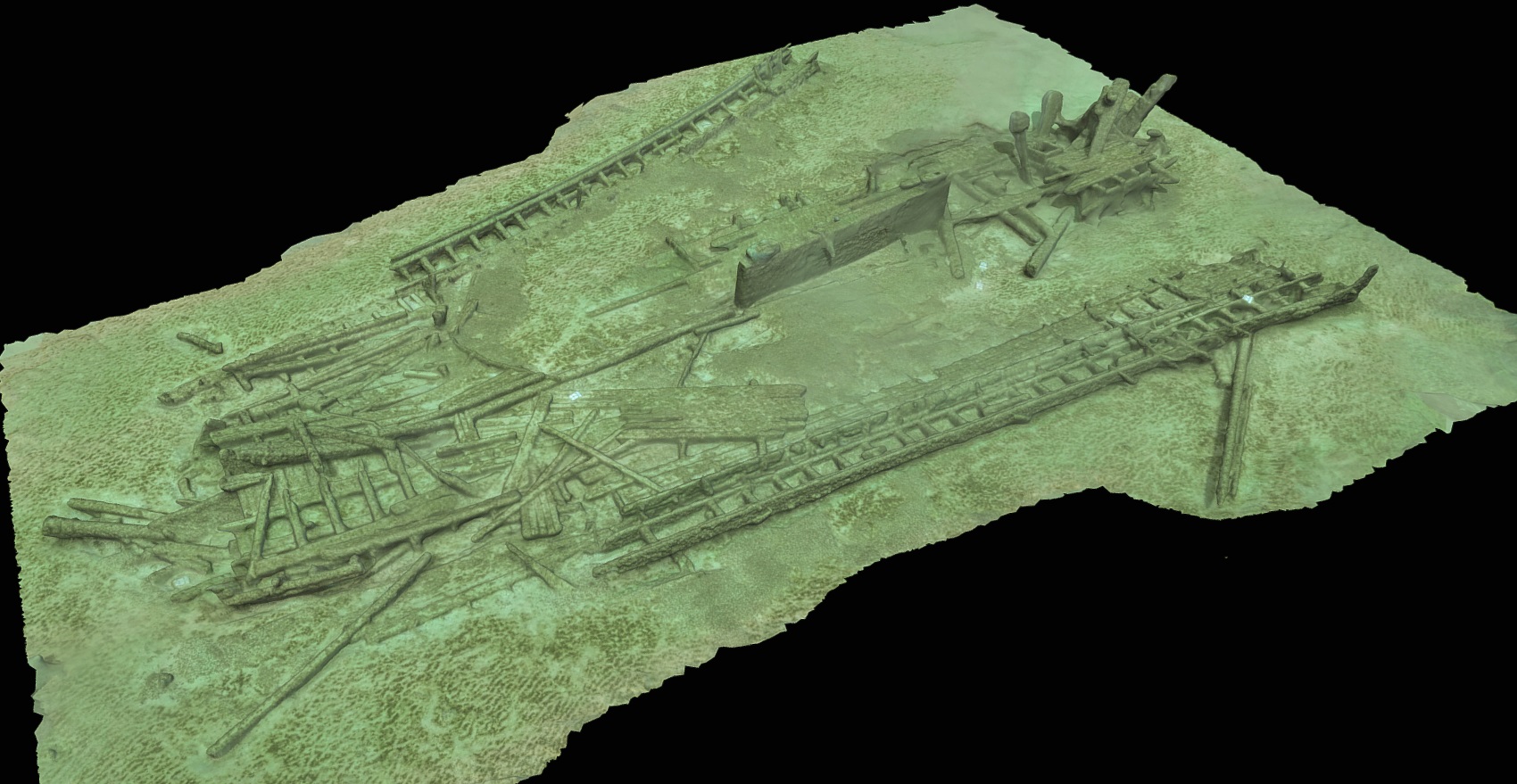Service History
The scow schooner
I.A. Johnson was constructed in early 1867 under the supervision of Master Carpenter J.A. Johnson at a shipyard in Dover Bay, Ohio. Very little is known about J.A. Johnson or his shipyard, although it is known that
I.A. Johnson was not the only ship he built. The early operational story of the
I.A. Johnson is characterized by numerous changes in ownership and cargo of mostly lumber, ties, bailed hay, feed, corn, and pork.
In May of 1880, the
I.A. Johnson was purchased by the C.B. Freyberg & Brothers Company for $2,500. The vessel was purchased for the use in the lumber trade with Martin Coyne as Master. The Freyberg Brothers were influential in Wisconsin’s lumber industry along the Lake Michigan coast. Brothers Charles Bernard (C.B.), Albert, and Herman Freyberg were born in Germany and immigrated to the United States with their family in 1852. The Freyberg company owned many vessels for their exploits including the iron steamer
Julia and scow schooners
I.A. Johnson and
R.H. Becker, while chartering many others. Under Freyberg ownership, the scow would transport lumber from the Freyberg operations on Washington Island and upper Door County to the company's mill in Sheboygan. The vessel would then return to Washington Island with groceries for the store owned by the Freybergs. The
I.A. Johnson would remain under Freyberg ownership until its demise.
Final Voyage
On September 22, 1890,
I.A. Johnson left Sheboygan late in the evening carrying $600 worth of provisions and goods aimed for the Freyberg store at Washington Island. The scow was ten miles north of Sheboygan when it collided with the 3-masted schooner
Lincoln Dall around 2:00am on September 23. The
Lincoln Dall was heavily laden with lumber for the port of Chicago. Thoroughly damaged by the collision, the scow began to take on water at the bow.
I.A. Johnson’s five-member crew, consisting of Herman Freyberg, Henry Freyberg, Larens Freyberg, Halver Halverson, and Nils Starke, were rescued and taken on the
Lincoln Dall. The
Lincoln Dall suffered damage to its head rigging.
Around 3:30am the Sheboygan Lifesaving Station spotted the struggling schooner northeast of Sheboygan and commissioned the tug
Sheboygan to take it in tow. The crew of the
I.A. Johnson reported the sinking of their scow around 10:30am. After the initial reporting, the
Lincoln Dall was towed to Milwaukee for repairs. Captain Ed. McCall of the
Lincoln Dall claimed that he saw the
I.A. Johnson before the collision, but he had the right of way and assumed that the
I.A. Johnson would change course. Neither vessel altered their course leading to the collision.
The lifesaving crew launched the surfboat and was towed to the location of the wreck by the tug
Sheboygan. After reaching the scow around 2:00pm, only the stern was discovered sticking above the water. A towline was secured between the
Sheboygan and the
I.A. Johnson and the tug began towing the scow to
Sheboygan. The attempt did not last long and after 4 miles the vessel’s stern broke and the
I.A. Johnson sank completely in about 100 feet of water northwest of the Sheboygan Lifesaving Station. The vessel and its cargo were considered a total loss at a total of $2,700 dollars. The vessel was not insured. During the attempted salvage of the vessel, the Coast Guard recovered two bags of flour. Other reports indicated the some of the ship’s cargo washed ashore near Pigeon River three miles north of Sheboygan. The enrollment documents for the
I.A. Johnson were officially surrendered at the Port of Milwaukee on August 10, 1894.
Today
I.A. Johnson shipwreck site was discovered and reported to the Wisconsin Historical Society by Steve Radovan in 2015. Archaeologists and volunteers surveyed the site in 2018.
The
I.A. Johnson lies broken along the sandy bottom in 93 feet of water. The scow's stempost and centerboard stand upright while the stern and sides of the vessel have fallen outward. A large portion of the bilge still covered by sand. Overall, the site exhibits excellent preservation with major hull sections intact, including the centerboard and centerboard trunk. Its cap, windlass, and bow section remain intact, with complete port and starboard sides. Few pieces of deck structure remain extant, and the majority of the vessel’s floor remains covered by sand. A thick layer of quagga mussels coats the exposed surfaces of the vessel. The vessel’s integrity, along with the presence of the entire vessel and operational deck implements, offers a wealth of information for archaeologists and researchers.
_0002.jpg)
